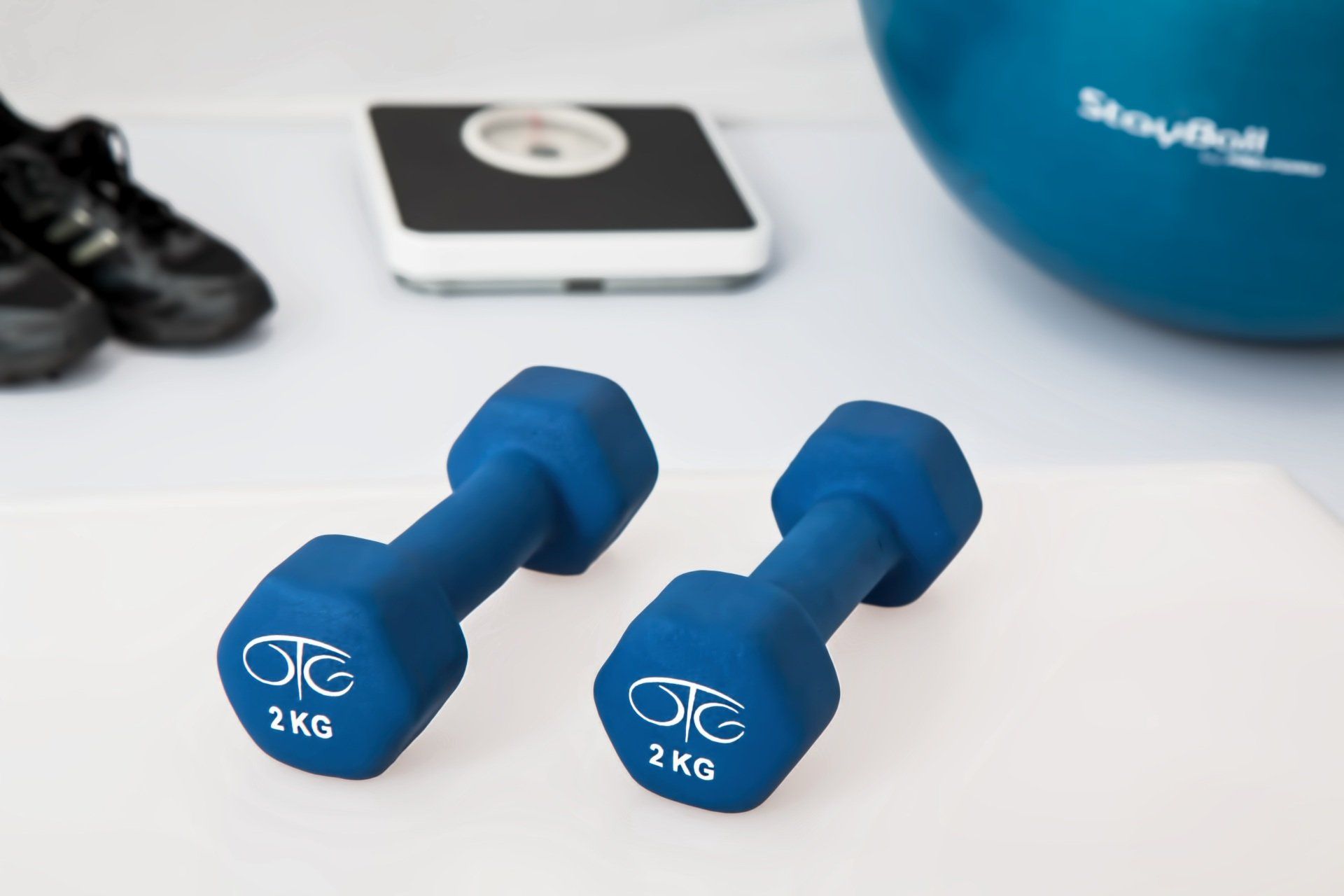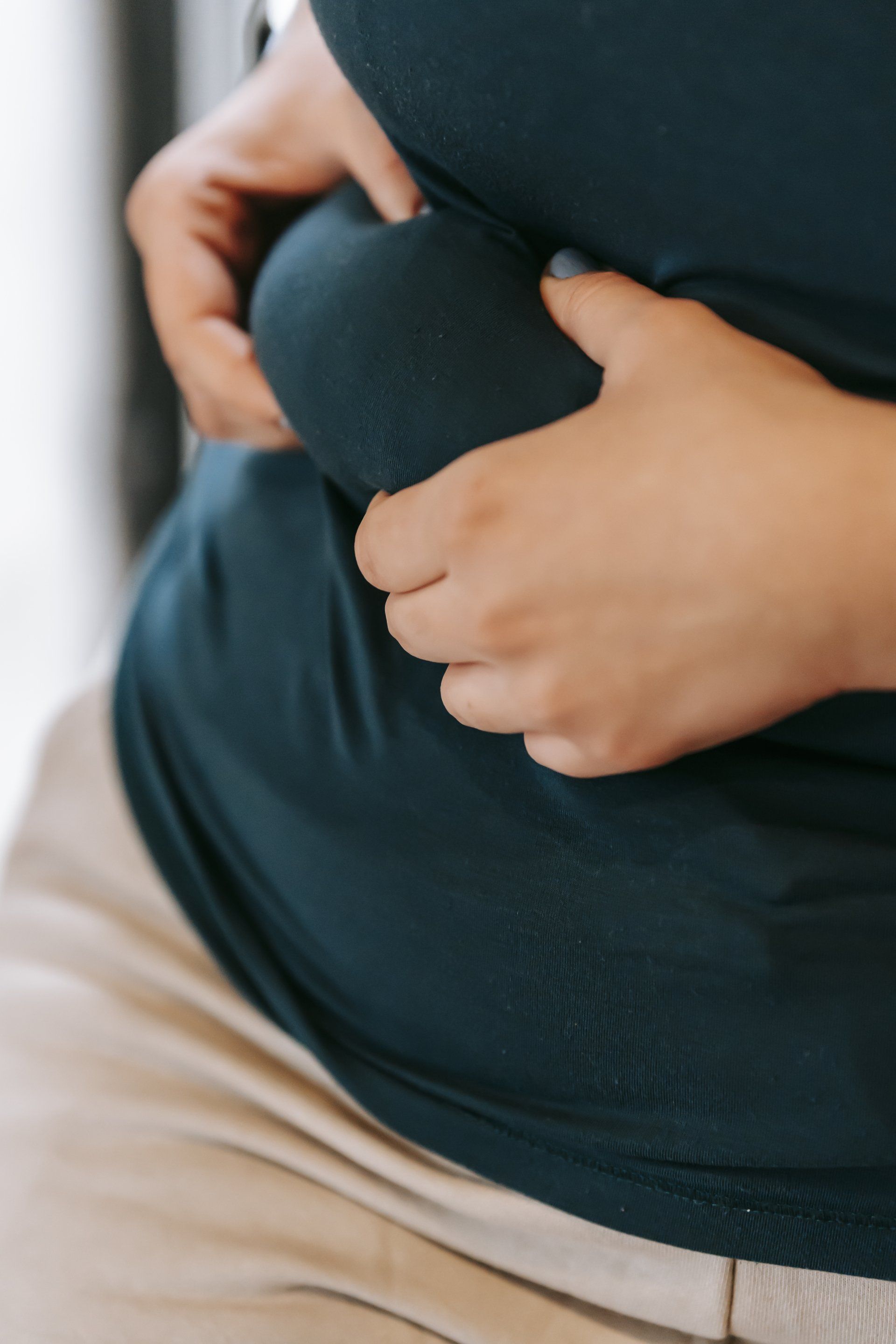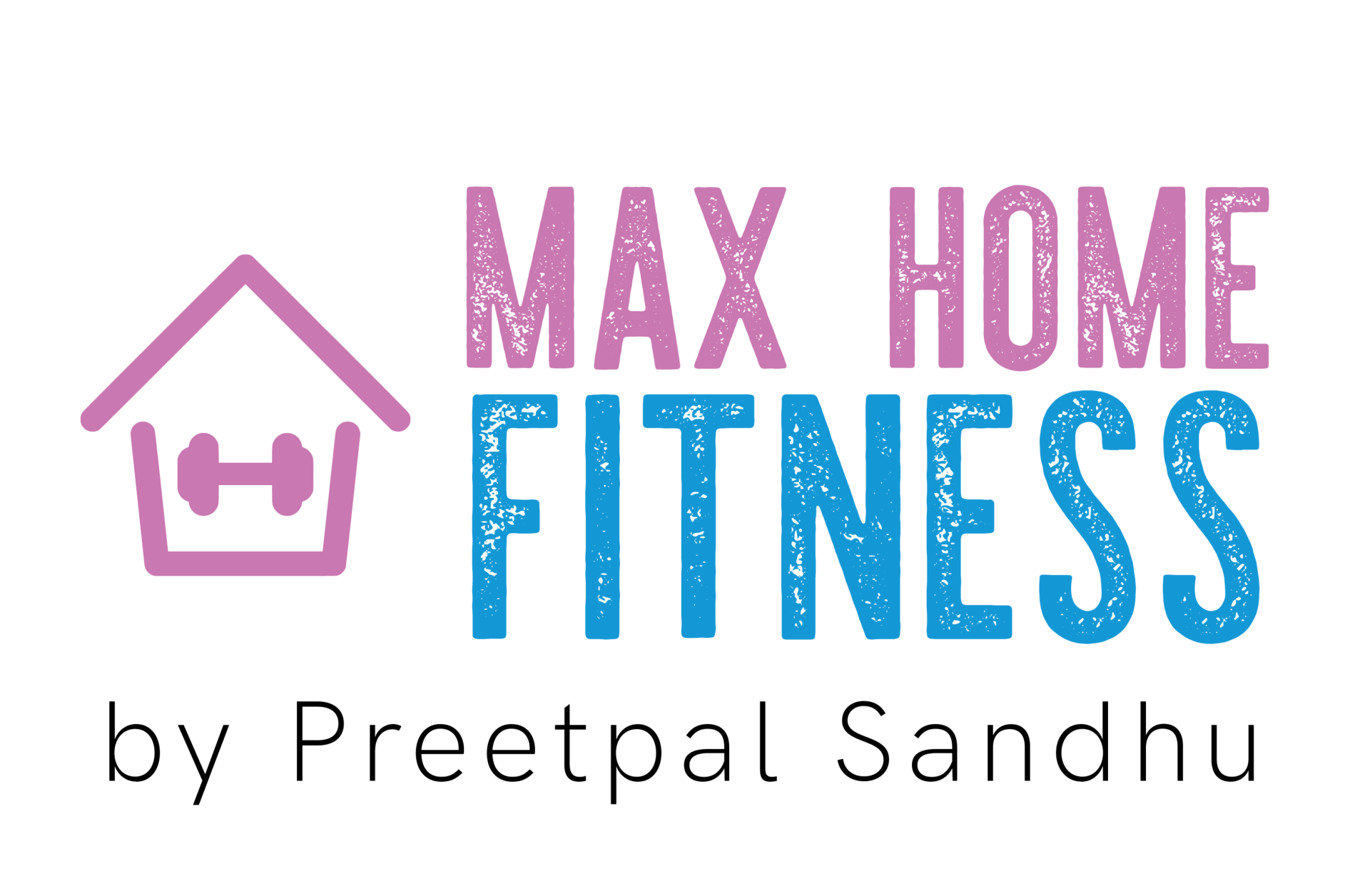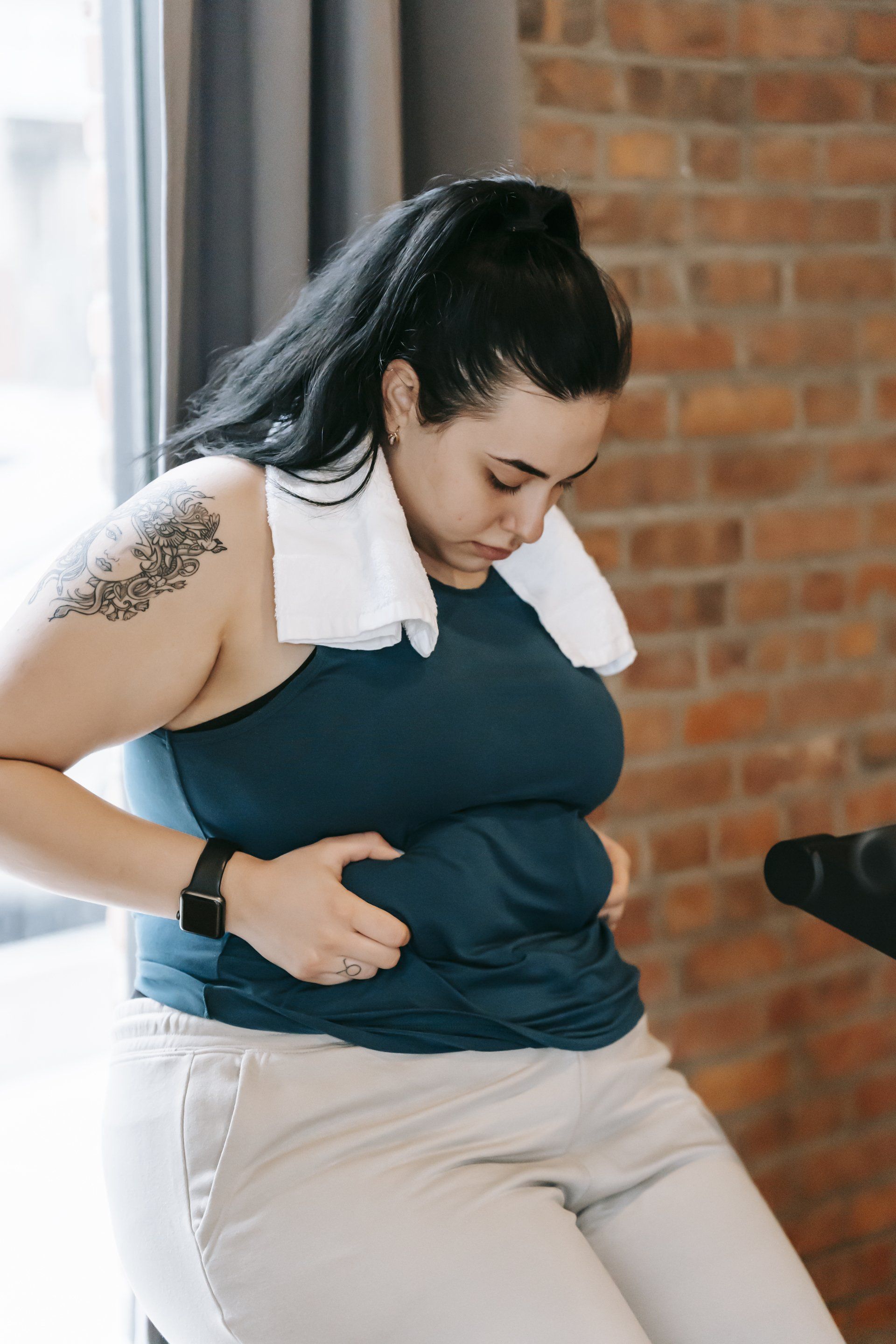10 Morning Habits That Help You Lose Weight
Rachael Link, MS, RD • October 2, 2021
10 Morning Habits That Help You Lose Weight
No matter what your weight loss
goals are, losing weight can feel impossible at times.
However, shedding a few pounds doesn’t have to involve a complete overhaul of your current diet and lifestyle.
In fact, making a few small changes to your morning routine can help you lose weight and keep it off.
1. Eat a High-Protein Breakfast
There’s a good reason breakfast is considered the most important meal of the day.
What you eat for breakfast can set the course for your entire day. It determines if you’ll feel full and satisfied until lunch, or if you’ll be heading to the vending machine before your mid-morning snack.
Eating a high-protein breakfast may help cut cravings and aid in weight loss.
In one study in 20 adolescent girls, eating a high-protein breakfast reduced post-meal cravings more effectively than a normal-protein breakfast.
Another small study showed that eating a high-protein breakfast was associated with less fat gain and reduced daily intake and hunger, compared to a normal-protein breakfast.
Protein may also aid weight loss by decreasing levels of ghrelin, the “hunger hormone” that is responsible for increasing appetite.
In fact, one study in 15 men found that a high-protein breakfast suppressed ghrelin secretion more effectively than a high-carb breakfast.
To help get your day off to a good start, consider protein sources like eggs, Greek yogurt, cottage cheese, nuts and chia seeds.
SUMMARY
A high-protein breakfast may aid weight loss by reducing cravings, appetite and ghrelin secretion.
2. Drink Plenty of Water
Starting your morning with a glass or two of water is an easy way to enhance weight loss.
Water can help increase your energy expenditure, or the number of calories your body burns, for at least 60 minutes.
In one small study, drinking 16.9 fluid ounces (500 ml) of water led to a 30% increase in metabolic rate, on average.
Another study found that overweight women who increased their water intake to over 34 ounces (one liter) per day lost an extra 4.4 pounds (2 kg) over one year, without making any other changes in their diet or exercise routine.
What’s more, drinking water may reduce appetite and food intake in some individuals.
One study in 24 older adults showed that drinking 16.9 fluid ounces (500 ml) of water reduced the number of calories consumed at breakfast by 13%.
In fact, most studies on the topic have shown that drinking 34–68 ounces (1–2 liters) of water per day can aid in weight loss.
Starting your morning with water and staying well hydrated throughout the day is a great way to boost weight loss with minimal effort.
SUMMARY
Increasing your water intake has been associated with an increase in weight loss and energy expenditure, as well as a decrease in appetite and food intake.
3. Weigh Yourself
Stepping on the scale and weighing yourself each morning can be an effective method to increase motivation and improve self-control.
Several studies have associated weighing yourself daily with greater weight loss.
For instance, a study in 47 people found that those who weighed themselves daily lost about 13 pounds (6 kg) more over six months than those who weighed themselves less often.
Another study reported that adults who weighed themselves daily lost an average of 9.7 pounds (4.4 kg) over a two-year period, while those who weighed themselves once a month gained 4.6 pounds (2.1 kg).
Weighing yourself every morning can also help foster healthy habits and behaviors that may promote weight loss.
In one large study, frequent self-weighing was associated with improved restraint. Furthermore, those who stopped weighing themselves frequently were more likely to report increased calorie intake and decreased self-discipline.
For best results, weigh yourself right when you wake up. Do so after using the bathroom and before you eat or drink anything.
Additionally, remember that your weight may fluctuate daily and can be influenced by a variety of factors. Focus on the big picture and look for overall weight loss trends, rather than getting fixated on small day-to-day changes.
SUMMARY
daily self-weighing may be associated with more weight loss and increased restraint.
4. Get Some Sun
Opening the curtains to let in some sunlight or spending a few extra minutes outside each morning can help kickstart your weight loss. One small study found that exposure to even moderate levels of light at certain times of the day can have an influence on weight.
Moreover, an animal study found that exposure to ultraviolet radiation helped suppress weight gain in mice fed a high-fat diet.
Exposure to sunlight is also the best way to meet your vitamin D needs. Some studies have found that meeting your vitamin D requirements can aid in weight loss and even prevent weight gain.
In one study, 218 overweight and obese women took either vitamin D supplements or a placebo for one year. At the end of the study, those who met their vitamin D requirement lost an average of 7 pounds (3.2 kg) more than those with inadequate vitamin D blood levels.
Another study followed 4,659 older women for four years and found that higher levels of vitamin D were linked to less weight gain.
The amount of sun exposure you need can vary based on your skin type, the season and your location. However, letting in some sunlight or sitting outside for 10–15 minutes each morning may have a beneficial effect on weight loss.
SUMMARY
Sun exposure may have an influence on weight. Sunlight can also help you meet your vitamin D needs, which may help increase weight loss and prevent weight gain.
5. Practice Mindfulness
Mindfulness is a practice that involves fully focusing on the present moment and bringing awareness to your thoughts and feelings.
The practice has been shown to enhance weight loss and promote healthy eating habits.
For example, an analysis of 19 studies found that mindfulness-based interventions increased weight loss and reduced obesity-related eating behaviors.
Another review had similar findings, noting that mindfulness training resulted in significant weight loss in 68% of the studies reviewed.
Practicing mindfulness is simple. To get started, try spending five minutes each morning sitting comfortably in a calm space and connecting with your senses.
SUMMARY
mindfulness can increase weight loss and promote healthy eating behaviors.
6. Squeeze in Some Exercise
Getting in some physical activity first thing in the morning can help boost weight loss. One study in 50 overweight women measured the effects of aerobic exercise at different times of the day.
While there was not much difference noted in specific food cravings between those who exercised in the morning versus the afternoon, working out in the morning was associated with a higher level of satiety.
Exercising in the morning may also help keep blood sugar levels steady throughout the day. Low blood sugar can result in many negative symptoms, including excessive hunger.
One study in 35 people with type 1 diabetes showed that working out in the morning was associated with improved blood sugar control.
However, these studies focused on very specific populations and show an association, rather than causation. More research on the effects of morning exercise in the general population is needed.
SUMMARY
Exercising in the morning may be associated with increased satiety and improved blood sugar control.
7. Pack Your Lunch
Making the effort to plan and pack your lunch ahead of time can be a simple way to make better food choices and increase weight loss.
A large study including 40,554 people found that meal planning was associated with better diet quality, more diet variety and a lower risk of obesity.
Another study found that eating home-cooked meals more frequently was associated with improved diet quality and a decreased risk of excess body fat.
In fact, those who ate home-cooked meals at least five times per week were 28% less likely to be overweight than those who only ate home-cooked meals three times or less per week.
Try setting aside a few hours one night a week to plan and prepare your meals so that in the morning you can just grab your lunch and go.
SUMMARY
Meal planning and eating home-cooked meals are associated with improved diet quality and a lower risk of obesity.
8. Sleep Longer
Going to bed a bit earlier or setting your alarm clock later to squeeze in some extra sleep may help increase weight loss. Sleep deprivation may be associated with an increased appetite.
Sleep restriction increased hunger and cravings, especially for high-carb, high-calorie foods.
Lack of sleep has also been linked to an increase in calorie intake. 12 participants consumed an average of 559 more calories after getting just four hours of sleep, compared to when they got a full eight hours.
Establishing a healthy sleep schedule is a critical component of weight loss, along with eating well and exercising. To maximize your results, aim for at least eight hours of sleep per night.
SUMMARY
Sleep deprivation may increase appetite and cravings, as well as calorie intake.
9. Switch up Your Commute
While driving may be one of the most convenient ways to get to work, it may not be so great for your waistline.
Research shows that walking, biking or using public transportation may be tied to a lower body weight and reduced risk of weight gain.
One study followed 822 people over four years and found that those who commuted by car tended to gain more weight than non-car commuters.
Similarly, a study including 15,777 people showed that using public transportation or active methods of transport, such as walking or biking, was associated with a significantly lower body mass index and body fat percentage, compared to using private transportation.
Changing up your commute even a few times per week may be a simple way to ramp up weight loss.
SUMMARY
Walking, biking and using public transportation have all been associated with less weight gain and lower body weight and body fat, compared to driving to work.
10. Start Tracking Your Intake
Keeping a food diary to track what you eat can be an effective way to help boost weight loss and keep yourself accountable.
One study tracked weight loss in 123 people for one year and found that completing a food journal was associated with a greater amount of weight loss.
Another study showed that participants who regularly used a tracking system to self-monitor their diet and exercise lost more weight than those who did not regularly use the tracking system.
Similarly, a study of 220 obese women found that the frequent and consistent use of a self-monitoring tool helped improve long-term weight management.
Try using an app or even just a pen and paper to record what you eat and drink, starting with your first meal of the day.
SUMMARY
Using a food diary to track your intake can help increase weight loss.
Credit Source: www.healthline.com

In today's fast-paced world, finding time to hit the gym or engage in outdoor activities can be challenging. However, staying fit and healthy doesn't have to be complicated or require expensive equipment. With the convenience of exercising at home, you can achieve your fitness goals without leaving your comfort zone. In this blog, we'll explore five top exercises that will help you get fitter right in the comfort of your own home. High-Intensity Interval Training (HIIT): HIIT workouts are incredibly effective for improving cardiovascular fitness and burning calories in a short amount of time. The beauty of HIIT is that it can be customized to suit your fitness level. Choose exercises such as burpees, jumping jacks, mountain climbers, or squat jumps, and perform them at maximum intensity for 30 seconds, followed by a 10-15 second rest. Repeat this cycle for 15-20 minutes, and you'll experience an intense full-body workout that boosts your metabolism and improves endurance. Bodyweight Strength Training: Strength training is crucial for building lean muscle mass, improving bone density, and increasing overall strength. You can achieve significant results using your own body weight as resistance. Classic exercises like push-ups, squats, lunges, planks, and tricep dips can be performed at home with no equipment. Aim for three sets of 12-15 repetitions for each exercise, gradually increasing the intensity as you progress. To add variety, consider incorporating variations like diamond push-ups, pistol squats, or single-leg glute bridges. Yoga: Yoga not only improves flexibility but also enhances mental well-being. With numerous online resources and apps offering guided yoga sessions, you can easily practice yoga at home. Set aside 20-30 minutes each day for a yoga routine that includes poses like downward dog, warrior, tree pose, and child's pose. Yoga helps strengthen your core, improves balance, reduces stress, and promotes relaxation. Incorporating a regular yoga practice into your fitness routine will bring both physical and mental benefits. Skipping Rope: Skipping rope might seem like a childhood pastime, but it's a fantastic cardiovascular exercise that burns calories and improves coordination. All you need is a sturdy skipping rope and enough space to jump. Start with a warm-up and then jump rope for 1-2 minutes, followed by a short rest period. Repeat this cycle for 10-15 minutes. As you progress, try incorporating different jump variations, such as high knees, double unders, or cross-overs. Skipping rope is an excellent option for a quick and effective workout that can be done anywhere in your home. Cardio Dance Workouts: If you enjoy dancing, cardio dance workouts are a fun way to get your heart pumping while improving coordination and endurance. Numerous online platforms offer dance fitness routines that cater to various styles and skill levels. Choose a dance style that interests you, such as Zumba, hip-hop, or salsa, and follow along with the instructor. These workouts not only provide a fantastic cardio session but also uplift your mood and make exercise enjoyable. Conclusion: Getting fitter at home is both achievable and convenient. By incorporating these top five exercises into your routine, you can build strength, improve cardiovascular fitness, enhance flexibility, and boost your overall well-being. Remember to start at your own pace, gradually increasing the intensity as you progress. With commitment and consistency, your home can become your personal fitness sanctuary, bringing you closer to your health and fitness goals. So, lace up your shoes, roll out your yoga mat, and let's get fitter right at home!

Exercise is defined as any movement that makes your muscles work and requires your body to burn calories. There are many types of physical activity, including swimming, running, jogging, walking, and dancing, to name a few. Being active has been shown to have many health benefits, both physically and mentally. It may even help you live longer. Here are the top 8 ways regular exercise benefits your body and brain. 1. It can makes you feel happier Exercise has been shown to improve your mood and decrease feelings of depression, anxiety, and stress. It produces changes in the parts of the brain that regulate stress and anxiety. It can also increase brain sensitivity for the hormones serotonin and norepinephrine, which relieve feelings of depression. Additionally, exercise can increase the production of endorphins, which are known to help produce positive feelings and reduce the perception of pain. Furthermore, exercise has been shown to reduce stress and improve symptoms of anxiety. Interestingly, it doesn’t matter how intense your workout is. It seems that your mood can benefit from exercise no matter the intensity of the physical activity. The effects of exercise on mood are so powerful that choosing to exercise (or not) even makes a difference over short periods. Active people who stopped exercising regularly experienced significant increases in symptoms of depression and anxiety, even after only a few weeks. 2. It can helps with weight loss Inactivity is a major factor in weight gain and obesity. To understand the effect of exercise on weight reduction, it is important to understand the relationship between exercise and energy expenditure. Your body spends energy in three ways: digesting food exercising maintaining body functions like your heartbeat and breathing While dieting, a reduced calorie intake will lower your metabolic rate, which can delay weight loss . On the contrary, regular exercise has been shown to increase your metabolic rate, which can burn more calories to help you lose weight. Combining aerobic exercise with resistance training can maximize fat loss and muscle mass maintenance, which is essential for keeping the weight off. 3. It is good for your muscles and bones Exercise plays a vital role in building and maintaining strong muscles and bones. Activities like weightlifting can stimulate muscle building when paired with adequate protein intake. This is because exercise helps release hormones that promote the ability of your muscles to absorb amino acids. This helps them grow and reduces their breakdown. As people age, they tend to lose muscle mass and function, which can lead to an increased risk of injury. Practicing regular physical activity is essential to reducing muscle loss and maintaining strength as you age. Also, exercise helps build bone density when you’re younger, in addition to helping prevent osteoporosis later in life. Interestingly, some research suggests that high impact exercise, such as gymnastics or running, or odd impact sports, such as soccer and basketball, may help promote a higher bone density than non-impact sports like swimming and cycling. SUMMARY Physical activity helps you build muscles and strong bones. It may also help prevent osteoporosis. 4. It can increases your energy level Exercise can be a real energy booster for many people, including those with various medical conditions. 6 weeks of regular exercise reduced feelings of fatigue for 36 people who had reported persistent fatigue. Furthermore, exercise can significantly increase energy levels for people with chronic fatigue syndrome (CFS) and other serious illnesses. In fact, exercise seems to be more effective at combating CFS than other treatments, including passive therapies like relaxation and stretching or no treatment at all. Additionally, exercise has been shown to increase energy levels in people with other conditions like cancer. SUMMARY Engaging in regular physical activity can increase your energy levels. This is true even in people with persistent fatigue and those with serious health conditions. 5. It can reduces your risk of chronic disease Lack of regular physical activity is a primary cause of chronic disease. Regular exercise has been shown to improve insulin sensitivity, heart health, and body composition. It can also decrease blood pressure and cholesterol levels. In contrast, a lack of regular exercise — even in the short term — can lead to significant increases in belly fat, which may increase the risk of type 2 diabetes and heart disease. That’s why regular physical activity is recommended to reduce belly fat and decrease the risk of developing these conditions. SUMMARY Daily physical activity is essential to maintaining a healthy weight and reducing the risk of chronic disease. 6. It can helps skin health Your skin can be affected by the amount of oxidative stress in your body. Oxidative stress occurs when the body’s antioxidant defenses cannot completely repair the cell damage caused by compounds known as free radicals. This can damage the structure of the cells and negatively impact your skin. Even though intense and exhaustive physical activity can contribute to oxidative damage, regular moderate exercise can actually increase your body’s production of natural antioxidants, which help protect cells. In the same way, exercise can stimulate blood flow and induce skin cell adaptations that can help delay the appearance of skin aging. SUMMARY Moderate exercise can provide antioxidant protection and promote blood flow, which can protect your skin and delay signs of aging. 7. It can helps your brain health and memory Exercise can improve brain function and protect memory and thinking skills. To begin with, it increases your heart rate, which promotes the flow of blood and oxygen to your brain. It can also stimulate the production of hormones that enhance the growth of brain cells. Plus, the ability of exercise to prevent chronic disease can translate into benefits for your brain, since its function can be affected by these diseases. Regular physical activity is especially important in older adults since aging — combined with oxidative stress and inflammation — promotes changes in brain structure and function. Exercise has been shown to cause the hippocampus, a part of the brain that’s vital for memory and learning, to grow in size, which may help improve mental function in older adults. Lastly, exercise has been shown to reduce changes in the brain that can contribute to conditions like Alzheimer’s disease and schizophrenia. SUMMARY Regular exercise improves blood flow to the brain and helps brain health and memory. Among older adults, it can help protect mental function. 8. It can helps with relaxation and sleep quality Regular exercise can help you relax and sleep better. With regard to sleep quality, the energy depletion that occurs during exercise stimulates recuperative processes during sleep. Moreover, the increase in body temperature that occurs during exercise is thought to improve sleep quality by helping it drop during sleep. One review of six studies found that participating in an exercise training program helped improve self-reported sleep quality and reduced sleep latency, which is the amount of time it takes to fall asleep. Another older study showed that 16 weeks of physical activity improved sleep quality and helped 17 people with insomnia sleep longer and more deeply than the control group. It also helped them feel more energized during the day. What’s more, engaging in regular exercise seems to be beneficial for older adults, who are often affected by sleep disorders. You can be flexible with the kind of exercise you choose. It appears that either aerobic exercise alone or aerobic exercise combined with resistance training can both improve sleep quality. SUMMARY Regular physical activity, regardless of whether it is aerobic or a combination of aerobic and resistance training, can help you sleep better and feel more energized during the day. Credit Source: www.healthline.com

We include products we think are useful for our readers. If you buy through links on this page, we may earn a small commission. Here’s our process. There is a lot of bad weight loss information on the internet. Much of what is recommended is questionable at best, and not based on any actual science. However, there are several natural methods that have actually been proven to work. Here are 20 easy ways to lose weight naturally. 1. Add Protein to Your Diet When it comes to weight loss, protein is the king of nutrients. Your body burns calories when digesting and metabolizing the protein you eat, so a high-protein diet can boost metabolism by up to 80–100 calories per day. A high-protein diet can also make you feel more full and reduce your appetite. In fact, some studies show that people eat over 400 fewer calories per day on a high-protein diet. Even something as simple as eating a high-protein breakfast (like eggs) can have a powerful effect. 2. Eat Whole, Single-Ingredient Foods One of the best things you can do to become healthier is to base your diet on whole, single-ingredient foods. By doing this, you eliminate the vast majority of added sugar, added fat and processed food. Most whole foods are naturally very filling, making it a lot easier to keep within healthy calorie limits. Furthermore, eating whole foods also provides your body with the many essential nutrients that it needs to function properly. Weight loss often follows as a natural side effect of eating whole foods. 3. Avoid Processed Foods Processed foods are usually high in added sugars, added fats and calories. What’s more, processed foods are engineered to make you eat as much as possible. They are much more likely to cause addictive-like eating than unprocessed foods. 4. Stock Up on Healthy Foods and Snacks Food you keep at home greatly affects weight and eating behavior. By always having healthy food available, you reduce the chances of you or other family members eating unhealthy. There are also many healthy and natural snacks that are easy to prepare and take with you on the go. These include yogurt, whole fruit, nuts, carrots, and hard-boiled eggs. 5. Limit Your Intake of Added Sugar Eating a lot of added sugar is linked with some of the world’s leading diseases, including heart disease, type 2 diabetes and cancer. Since sugar goes by many names in ingredient lists, it can be very difficult to figure out how much sugar a product actually contains. Minimizing your intake of added sugar is a great way to improve your diet. 6. Drink Water There is actually truth to the claim that drinking water can help with weight loss. Drinking 0.5 liters (17 oz) of water may increase the calories you burn by 24–30% for an hour afterward. Drinking water before meals may also lead to reduced calorie intake, especially for middle-aged and older people. Water is particularly good for weight loss when it replaces other beverages that are high in calories and sugar. 7. Avoid Liquid Calories Liquid calories come from beverages like sugary soft drinks, fruit juices, chocolate milk and energy drinks. These drinks are bad for health in several ways, including an increased risk of obesity. A drastic 60% increase in the risk of obesity among children, for each daily serving of a sugar-sweetened beverage. It’s also important to note that your brain does not register liquid calories the same way it does solid calories, so you end up adding these calories on top of everything else that you eat. 8. Limit Your Intake of Refined Carbs Refined carbs are carbs that have had most of their beneficial nutrients and fiber removed. The refining process leaves nothing but easily digested carbs, which can increase the risk of overeating and disease. The main dietary sources of refined carbs are white flour, white bread, white rice, sodas, pastries, snacks, sweets, pasta, breakfast cereals, and added sugar. 9. Fast Intermittently Intermittent fasting is an eating pattern that cycles between periods of fasting and eating. There are a few different ways to do intermittent fasting, including the 5:2 diet, the 16:8 method and the eat-stop-eat method. Generally, these methods make you eat fewer calories overall, without having to consciously restrict calories during the eating periods. This should lead to weight loss, as well as numerous other health benefits. 10. Eat More Fruits and Vegetables Fruits and vegetables are extremely healthy, weight-loss-friendly foods. In addition to being high in water, nutrients and fiber, they usually have very low energy density. This makes it possible to eat large servings without consuming too many calories. Numerous studies have shown that people who eat more fruits and vegetables tend to weigh less. 11. Count Calories Once in a While Being aware of what you’re eating is very helpful when trying to lose weight. There are several effective ways to do this, including counting calories, keeping a food diary or taking pictures of what you eat. Using an app or another electronic tool may be even more beneficial than writing in a food diary. 12. Use Smaller Plates Using smaller plates helps you eat less, because it changes how you see portion sizes. People seem to fill their plates the same, regardless of plate size, so they end up putting more food on larger plates than smaller ones. Using smaller plates reduces how much food you eat, while giving you the perception of having eaten more. 13. Try a Low-Carb Diet That low-carb diets are very effective for weight loss. Limiting carbs and eating more fat and protein reduces your appetite and helps you eat fewer calories. This can result in weight loss that is up to 3 times greater than that from a standard low-fat diet. A low-carb diet can also improve many risk factors for disease. 14. Eat More Slowly If you eat too fast, you may eat way too many calories before your body even realizes that you are full. Faster eaters are much more likely to become obese, compared to those who eat more slowly. Chewing more slowly may help you eat fewer calories and increase the production of hormones that are linked to weight loss. 15. Add Eggs to Your Diet Eggs are the ultimate weight loss food. They are cheap, low in calories, high in protein and loaded with all sorts of nutrients. High-protein foods have been shown to reduce appetite and increase fullness, compared to foods that contain less protein. Furthermore, eating eggs for breakfast may cause up to 65% greater weight loss over 8 weeks, compared to eating bagels for breakfast. It may also help you eat fewer calories throughout the rest of the day. 16. Spice Up Your Meals Chili peppers and jalapenos contain a compound called capsaicin, which may boost metabolism and increase the burning of fat. Capsaicin may also reduce appetite and calorie intake. 17. Take Probiotics Probiotics are live bacteria that have health benefits when eaten. They can improve digestive health and heart health, and may even help with with weight loss. Overweight and obese people tend to have different gut bacteria than normal-weight people, which may influence weight. Probiotics may help regulate the healthy gut bacteria. They may also block the absorption of dietary fat, while reducing appetite and inflammation. Of all the probiotic bacteria, Lactobacillus gasseri shows the most promising effects on weight loss. 18. Get Enough Sleep Getting enough sleep is incredibly important for weight loss, as well as to prevent future weight gain. Sleep-deprived people are up to 55% more likely to become obese, compared to those who get enough sleep. This number is even higher for children. This is partly because sleep deprivation disrupts the daily fluctuations in appetite hormones, leading to poor appetite regulation. 19. Eat More Fiber Fiber-rich foods may help with weight loss. Foods that contain water-soluble fiber may be especially helpful, since this type of fiber can help increase the feeling of fullness. Fiber may delay stomach emptying, make the stomach expand and promote the release of satiety hormones. Ultimately, this makes us eat less naturally, without having to think about it. Furthermore, many types of fiber can feed the friendly gut bacteria. Healthy gut bacteria have been linked with a reduced risk of obesity. Just make sure to increase your fiber intake gradually to avoid abdominal discomfort, such as bloating, cramps and diarrhea. 20. Combat Your Food Addiction Food addiction involves overpowering cravings and changes in your brain chemistry that make it harder to resist eating certain foods. This is a major cause of overeating for many people, and affects a significant percentage of the population. In fact, a recent 2014 almost 20% of people fulfilled the criteria for food addiction. Some foods are much more likely to cause symptoms of addiction than others. This includes highly processed junk foods that are high in sugar, fat or both. The best way to beat food addiction is to seek help. Credit Source: www.healthline.com














